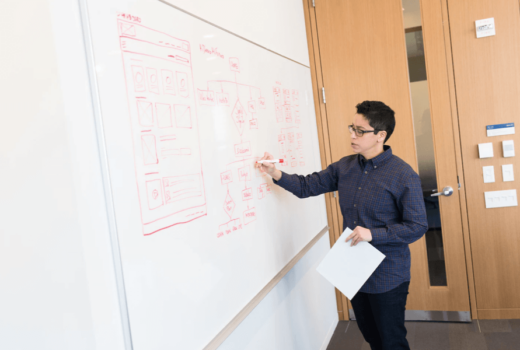Obama Streamlines STEM Education

This is presented in the 5-year strategic plan on the federal science, technology, engineering and mathematics (STEM) education. “The health and longevity of our Nation’s, citizenry, economy and environmental resources depend in large part on the acceleration of scientific and technological innovations, such as those that improve health care, inspire new industries, protect the environment, and safeguard us from harm. Maintaining America’s historical preeminence in the STEM fields will require a concerted and inclusive effort to ensure that the STEM workforce is equipped with the skills and training needed to excel in these fields,” says John P. Holden, Assistant to the President for Science and Technology.
Increase effectiveness
In order to achieve these goals, Obama’s 2014 budget request includes a 6.7 percent increase for STEM-education. To increase the effectiveness of these programs the number of federal STEM education programs will be reduced from 226 to 110. “There has been a long-standing concern regarding the number of STEM programs and the ability of the federal government to measure their effectiveness”, the American Institute for Physics stated.
Obama’s strategic plan revises the roles of the Department of Education and the National Science Foundation and defines the role of the Smithsonian Institution in federal STEM education. In addition, the Strategic Plan defines the Administration’s priority STEM education investment areas and approach for the coordination of federal STEM programs.
“The Department of Education will play an increased role in improving STEM instruction [on primary and secondary education] by supporting partnerships among school districts and universities, science agencies, businesses, and other community partners to transform teaching and learning. It will invest an additional $80 million in support of the 100,000 new STEM education teachers goal and $35 million for the launch of a pilot STEM education Master Teacher Corps, as well as in creation of new STEM Innovation Networks to better connect school districts with local, regional, and national STEM resources. The Department will also collaborate with all of the CoSTEM agencies to ensure that Federal scientific assets are utilized in the improvement STEM education.”
Inside and outside the classroom
“The Smithsonian Institution will receive $25 million to focus on improving the reach of informal STEM education by ensuring that materials are aligned to what students are learning in the classroom.” It will collaborate with a variety of partners to “harness their unique expertise and resources to distribute relevant, evidence-based materials and curricula, on-line resources, and delivery and dissemination mechanisms to reach more teachers and students both inside and outside the classroom.”
Obama’s plan suggests redesigning graduate STEM education to include providing “graduate-level trained STEM professionals with basic and applied research expertise, options to acquire specialized skills in areas of national importance and mission agency’s needs, and ancillary skills needed for success in a broad range of careers.”
The five priority investment areas for STEM education include:
- Improve STEM Instruction: Prepare 100,000 excellent new K-12 STEM teachers by 2020, and support the existing STEM teacher workforce
- Increase and Sustain Youth and Public Engagement in STEM: Support a 50 percent increase in the number of U.S. youth who have an authentic STEM experience each year prior to completing high school
- Enhance STEM Experience of Undergraduate Students: Graduate one million additional students with degrees in STEM fields over the next 10 years
- Better Serve Groups Historically Under-represented in STEM Fields: Increase the number of students from groups that have been underrepresented in STEM fields that graduate with STEM degrees in the next 10 years and improve women’s participation in areas of STEM where they are significantly underrepresented
- Design Graduate Education for Tomorrow’s STEM Workforce: Provide graduate-trained STEM professionals with basic and applied research expertise, options to acquire specialized skills in areas of national importance, mission-critical workforce needs for the CoSTEM agencies, and ancillary skills needed for success in a broad range of careers
Meest Gelezen
Vrouwen houden universiteit draaiende, maar krijgen daarvoor geen waardering
Hbo-docent wil wel rolmodel zijn, maar niet eigen moreel kompas opdringen
‘Sluijsmans et al. slaan de plank volledig mis’
Wederom intimidatie van journalisten door universiteit, nu in Delft
‘Free riding brengt het hoger onderwijs in de problemen’



